Introduction
- Family Hui Hawaii: a local non-profit;
- Major goal: to ensure American children’s well-being;
- Target population: parents of children aged between 0 and 5 years old;
- Primary activities: peer-led support groups.
- Why is it important?
- 4.1 million cases of child maltreatment in 2017 (American SPCC, 2018);
- Child maltreatment and its outcomes;
- Project Objectives:
- To investigate NGO’s common marketing and publicity fundraising methods;
- To examine donors and potential donors’ motivations;
- To develop a plan to improve marketing and publicity;
- Expected Outcomes:
- The introduction of a new effective marketing strategy for Family Hui Hawaii;
- The evaluation of the effectiveness of the new approach;
- The identification of factors affecting donors’ behaviors and attitudes.
Family Hui Hawaii is a non-profit organization based on Oahu, a Hawaiian island. The primary goal the organization is trying to achieve is to improve the well-being of American children by preventing abuse, neglect, and depression (Family Hui Hawaii, 2018). The NGO targets parents of young children aged between 0 and 5 years old, as well as expecting parents. Family Hui Hawaii aims at an urgent problem undermining the development of the entire nation. The organization arranges peer-led support groups where parents are trained and motivated to raise their children and communicate with them effectively.
Over four million American children faced maltreatment in 2017 (American SPCC, 2018). These experiences have adverse effects on children’s health as well as influence their behaviors in adulthood. Abused or neglected children tend to suffer from physical injuries, as well as psychological and emotional traumas, that may lead to physical or cognitive impairments (CDC, 2018). These children develop such serious diseases as cardiovascular disorders, anxiety, depression, addiction, and even suicide ideation. Children coming from abusive families often abuse or neglect their children creating a vicious circle. The expected outcomes of this project include the identification of donors’ motivations to participate in various interventions, the introduction of a new marketing strategy, the evaluation of the new marketing strategy.
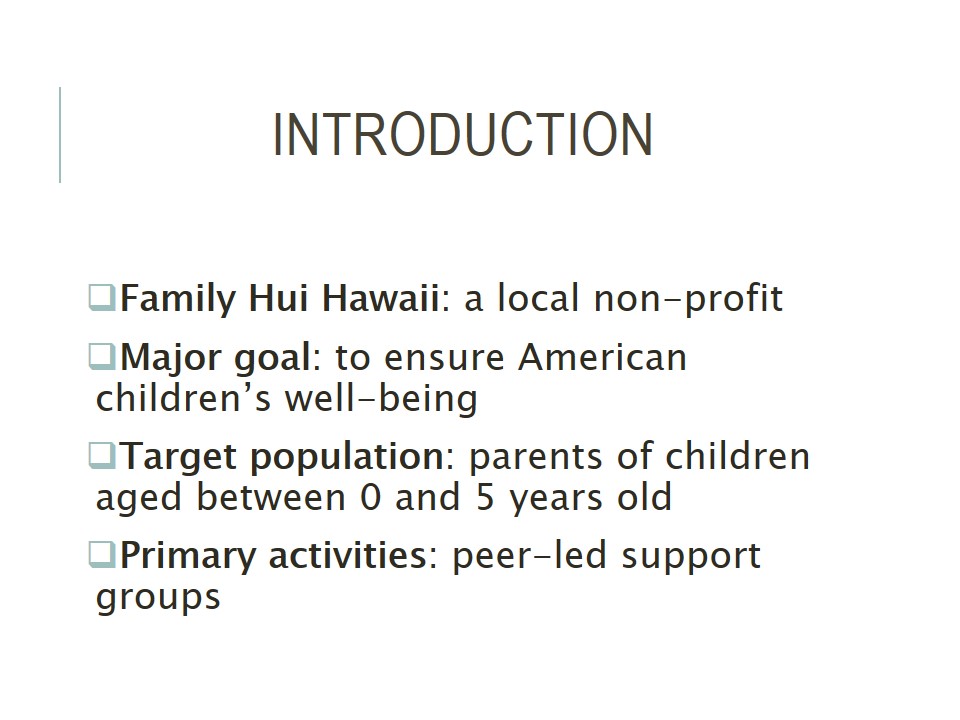

Literature Review
- 1.3 million of 501 (c) 3 tax status organizations in the USA (Grau, 2014).
- 2% of GDP of donations.
- Evidence-based approaches (Pagnoni & Solomon, 2014).
Over one million organizations have the 501 (c) 3 tax status in the United States (Grau, 2014). The amount of funds donated to NGOs is increasing each year. It reached 2% of the country’s GDP, but it is clear that the functioning of NGOs needs further development. Pagnoni and Solomon (2014) claim that more research is needed and donors’ behaviors should be properly studied.
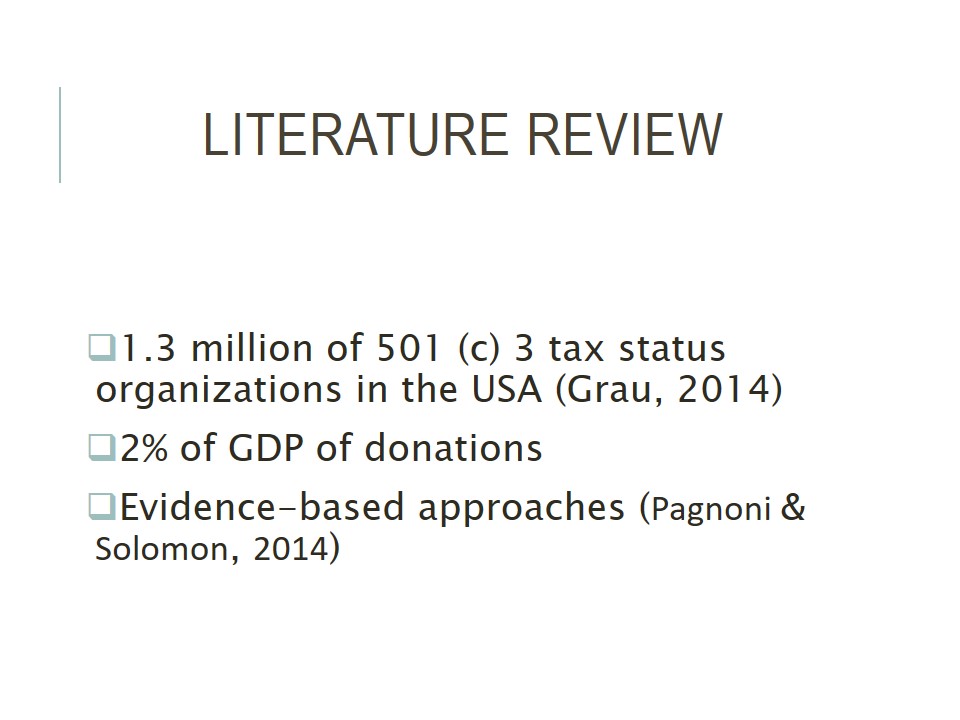
Academic Literature
- Social media use (Comcowich, 2018; Ewing, 2017; Williams, 2015).
- Social media research (Clese, 2015).
- Content marketing benefits (Miller, 2013).
- Strategic marketing (Spector, 2012).
Researchers have addressed various aspects of NGOs and their functions. Fundraising is one of the central areas investigated in detail (Spector, 2012). The social media have proved to be effective for marketing purposes in different markets and industries (Comcowich, 2018; Ewing, 2017; Williams, 2015). NGOs also benefit from the social media use as they reach wide audiences and get to know their existing and potential donors better (Clese, 2015). Miller (2013) emphasizes that content marketing offers numerous opportunities to increase fundraising and motivate people to be active participants and donors of projects and incentives. Spector (2012) also notes that NGOs should have a clear marketing strategy that will help them identify their target population and the most appropriate marketing instruments.
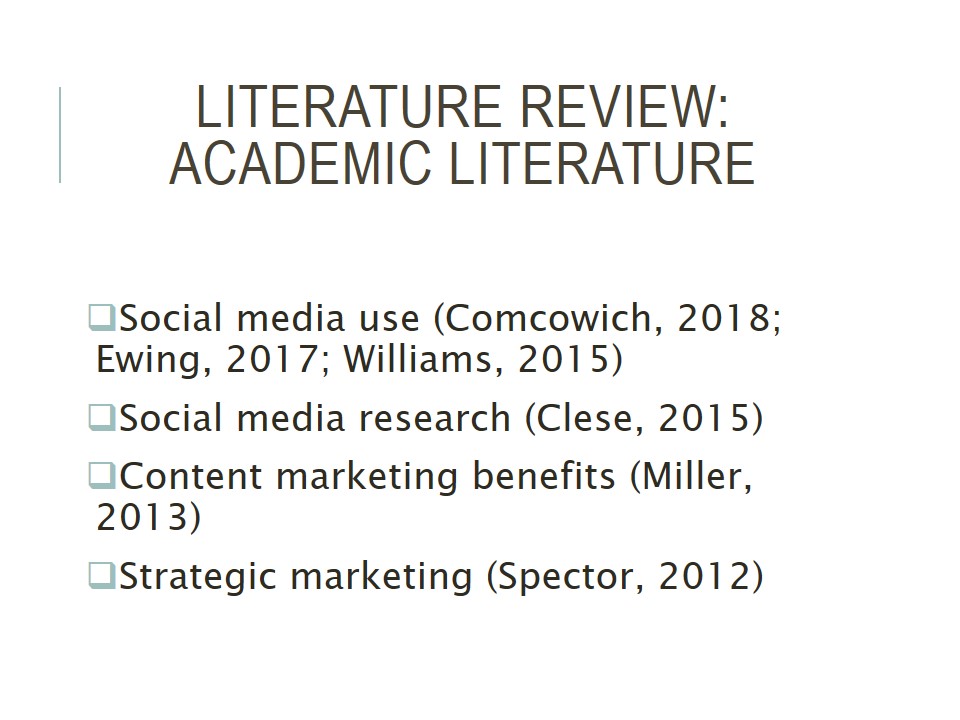
Existing Gaps
- The focus on NGOs.
- The lack of attention to donors’ behaviors.
- Social media as a tool to create and maintain a donor base.
Although NGOs have received substantial attention in academia, the current research is characterized by certain gaps. In the majority of cases, the emphasis is placed on NGOs, but it is essential to identify motivations, needs, and behaviors of existing and potential donors. The social media are also in researchers’ lenses, but little attention is paid to these resources as instruments to create and maintain donor bases. The social media are already used to explore people’s behaviors and attitudes, but there are a few studies looking into effective strategies to develop and use donor bases.
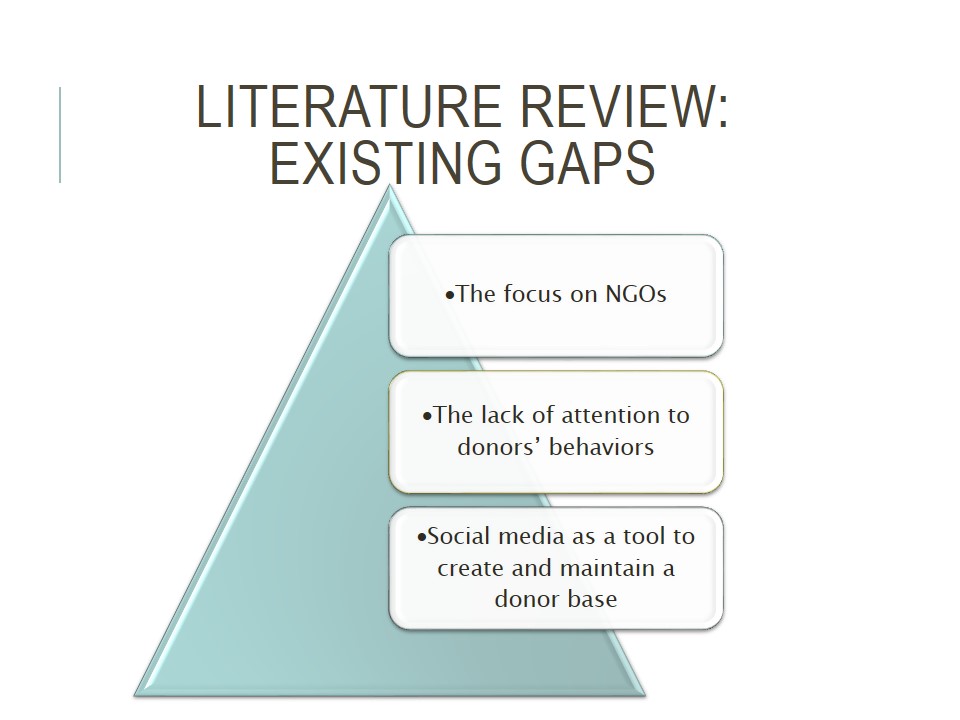
Research Questions
- What marketing methods have Family Hui Hawaii employed?
- What research instruments have been utilized?
- How effective are the used approaches?
- What factors affect donors’ willingness and readiness to donate?
- What strategies and marketing tools can improve the NGO’s performance?
- How can this project facilitate the discussion of the child maltreatment program?
The present research will be guided by the following research questions.
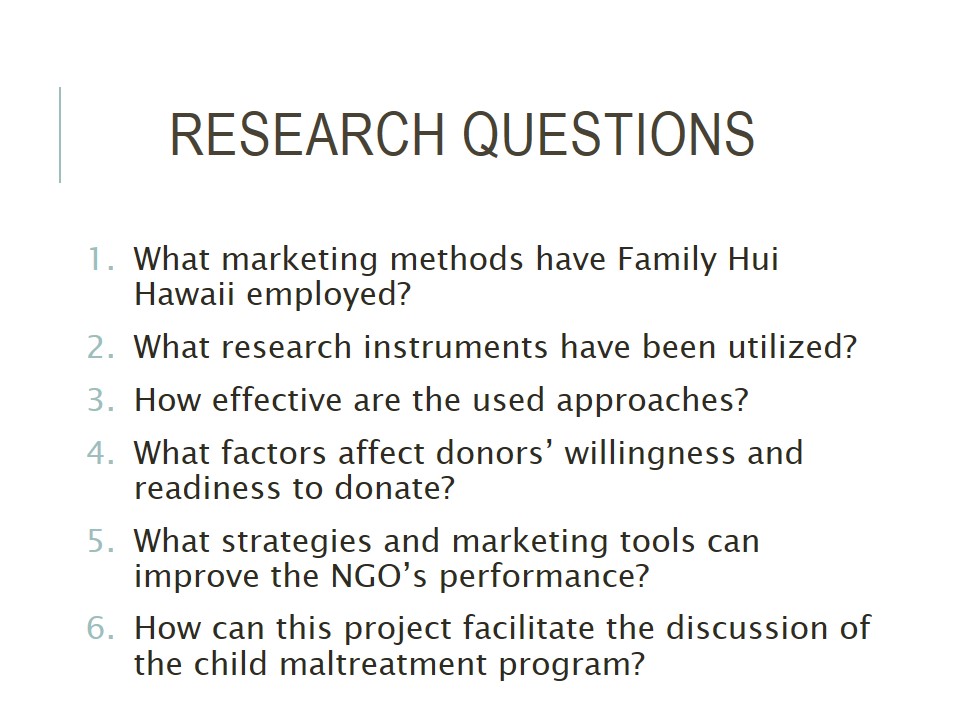
Data Collection Methods
This study is based on a comprehensive research synthesis and case analysis. First, the existing literature on the matter was reviewed, and the focus was on the existing marketing methods and their effectiveness. The analysis of the current research was also instrumental in refining the methodology of the present study. The next step within the scope of this study was addressing the stakeholders. First, the discussions with the employees of Family Hui Hawaii were held in order to identify and evaluate the efficacy of marketing methods. Based on this interaction, it was possible to develop new methods aimed at raising people’s awareness of the NGO in question and motivating people to donate. Surveying was another data collection tool that aimed at obtaining information concerning donors’ attitudes and behaviors regarding their participation in NGOs’ projects as well as the new marketing tools. In order to gain in-depth insights into donors’ perspectives, interviews were also implemented. Several donors were reached and interviewed with the focus on the factors affecting their willingness to donate or participate in charity incentives.
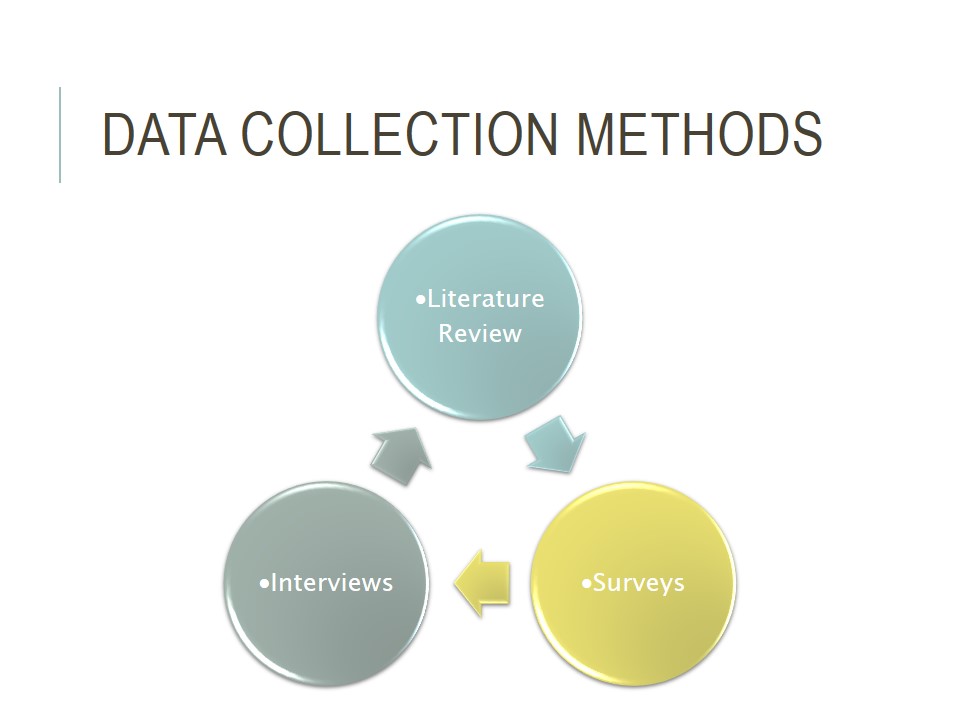
Data Analysis
- Descriptive statistics.
- Inferential statistics.
- Content analysis.
The project targets several research questions so different types of data analysis was utilized. Descriptive statistics were used to analyze the demographic peculiarities of donors. Their attitudes and behaviors were also explored with the help of descriptive analysis. The evaluation of the proposed marketing strategies required the use of inferential statistics. The correlation between the introduction of new marketing tools and donors’ behaviors was researched. Finally, the examination of qualitative data was implemented with the help of content analysis. The interviews were transcribed, and the most recurrent themes were identified. In order to enhance the validity and reliability of the findings, technology was incorporated into the data analysis process. Such tools as SPSS and ANOVA were employed to analyze quantitative and qualitative data.
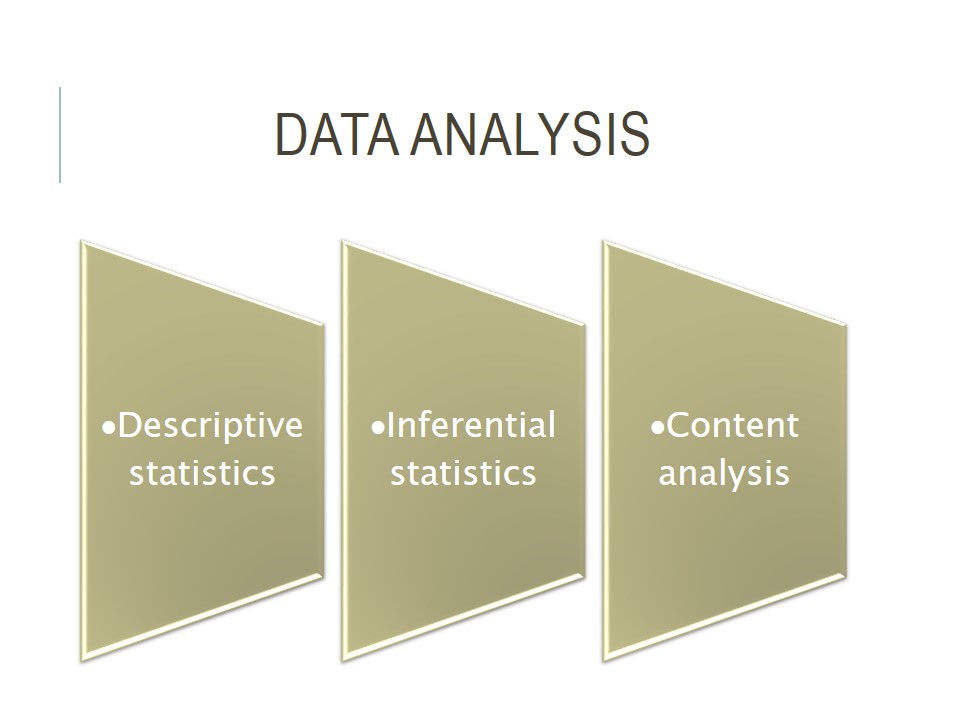
References
American SPCC. (2018). Child maltreatment statistics in the U.S. Web.
Centers for Disease Control and Prevention (CDC). (2018). Child abuse and neglect: Consequences. Web.
Clese, J. (2015). Engage donors with social media. NonprofitWorld, 33(3), 6-7. Web.
American SPCC. (2018). Child maltreatment statistics in the U.S. Web.
Centers for Disease Control and Prevention (CDC). (2018). Child abuse and neglect: Consequences. Web.
Clese, J. (2015). Engage donors with social media. NonprofitWorld, 33(3), 6-7. Web.
Miller, K. L. (2013). Contentmarketingfornonprofits: A communicationsmapforengagingyourcommunity,becoming a favoritecause, andraisingmoremoney. San Francisco, CA: Jossey-Baass.
Pagnoni, L., & Solomon, M. (2014). Thenonprofitfundraisingsolution:Powerfulrevenuestrategiestotakeyoutothenextlevel. New York, NY: AMACOM.
Spector, D. (2012). The importance of marketing to nonprofits. Web.
Williams, T. K. (2015). Strategicuseofsocialmediaonnonprofitrevenues: AnanalysisofFacebookandnonprofitcommunity–basedorganizationsinthemidwest. Web.